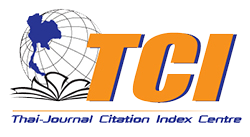การวิเคราะห์ประสิทธิภาพของระบบกักเก็บพลังงานไฮบริด ผสานแบตเตอรี่ ตัวเก็บประจุยิ่งยวด และตัวดูดซับแรงสั่นสะเทือน สำหรับยานยนต์ไฟฟ้า
Performance Analysis of a Hybrid Energy Storage System Combining Batteries, Supercapacitors, and RSA for Electric Vehic
Abstract
บทความนี้นำเสนอแนวทางการเพิ่มประสิทธิภาพของระบบกักเก็บพลังงานแบบไฮบริด (HESS) ที่ผสมผสานกันระหว่างตัวเก็บประจุยิ่งยวด (Supercapacitor; SC) และแบตเตอรี่ โดยอาศัยหลักการเก็บเกี่ยวพลังงานแบบแขวนลอยผ่านการใช้ตัวดูดซับแรงสั่นสะเทือน (RSA) พร้อมกับการติดตั้งระบบเบรกแบบจ่ายพลังงานใหม่ (RBS) สำหรับยานยนต์ไฟฟ้าขนาดกลางที่ใช้มอเตอร์ซิงโครนัสชนิดแม่เหล็กถาวร (PMSM) ในสถานการณ์เบรกแบบจ่ายพลังงานใหม่ กลไกโครงข่ายประสาทเทียม (ANN) จะทำหน้าที่เป็นตัวควบคุมระบบ RBS เพื่อปรับรูปคลื่นการสลับของอินเวอร์เตอร์แหล่งจ่ายไฟสามเฟสให้เหมาะสม จากนั้นถ่ายโอนพลังงานการเบรกดังกล่าวไปยังอุปกรณ์กักเก็บพลังงาน นอกจากนี้ SC ที่ติดตั้ง RSA ยังสามารถดูดซับพลังงานการสั่นสะเทือนของยานพาหนะ และแปลงเป็นพลังงานไฟฟ้าเพื่อกลับเข้าสู่อุปกรณ์กักเก็บพลังงาน การทดลองพบว่ายานยนต์ไฟฟ้าที่ติดตั้งระบบไฮบริด ร่วมกับ RSA และ RBS เพียงอย่างใดอย่างหนึ่งมีระยะทางการขับขี่ 134.19 กิโลเมตร (13 รอบ) และ 184.21 กิโลเมตร (18 รอบ) ตามลำดับ ในขณะที่ยานยนต์ไฟฟ้าที่มีทั้งระบบ RBS และ RSA มีระยะทางการขับขี่สูงถึง 210.13 กิโลเมตร (21 รอบ) ยิ่งไปกว่านั้นยังพบว่าระบบกักเก็บพลังงานแบบไฮบริดที่ร่วมกับ RAS และ RBS สามารถเพิ่มประสิทธิภาพการขับขี่ได้ถึง 56.59% เมื่อเทียบกับระบบที่ใช้เพียง RSA นอกจากนี้ยังยืดอายุการใช้งานของแบตเตอรี่ได้อีกด้วย
This article presents an approach to enhance the performance of a Hybrid Energy Storage System (HESS) that integrates supercapacitors (SC) and batteries. The system is based on vibration energy harvesting using a Regenerative Shock Absorber (RSA), in conjunction with a Regenerative Braking System (RBS), designed for medium-sized electric vehicles driven by a Permanent Magnet Synchronous Motor (PMSM). During regenerative braking, an Artificial Neural Network (ANN) functions as the RBS controller, optimizing the switching waveform of the three-phase inverter power supply. The recovered braking energy is subsequently transferred to the energy storage devices. Additionally, the SCs coupled with the RSA are capable of absorbing vehicular vibration energy and converting it into electrical energy, which is also fed back into the storage system. Experimental results reveal that electric vehicles equipped solely with either RSA (HESS_RSA) or RBS (HESS_RBS) achieved driving ranges of 134.19 km (13 cycles) and 184.21 km (18 cycles), respectively. In contrast, the configuration integrating both RBS and RSA (HESS_RBS_RSA) attained a maximum driving range of 210.13 km (21 cycles). Furthermore, the HESS integrated with both RSA and RBS improved driving efficiency by up to 56.59% compared to the system using only RSA. This hybrid system also contributes to prolonging battery lifespan.
Keywords
[1] U.S. Environmental Protection Agency, Greenhouse Gas Emissions from a Typical Passenger Vehicle, 2023.
[2] S. Aminzadegan, M. Shahriari, F. Mehranfar, and B. Abramovi, “Factors affecting the emission of pollutants in different types of transportation: A literature review,” Energy Reports, vol. 8, 2022.
[3] L. B. Janos, C. S. Remzi, S. Detlef, and P. Ralf, “How to reduce the greenhouse gas emissions and air pollution caused by light and heavyduty vehicles with battery-electric, fuel cellelectric and catenary trucks,” Environment International, vol. 152, 2021.
[4] L. B. Janos, C. S. Remzi, P. Ralf, and D. Stolten, “The impact of diesel vehicles on NOx and PM10 emissions from road transport in urban morphological zones: A case study in North Rhine-Westphalia, Germany,” Science of The Total Environment, vol. 727, 2020.
[5] T. Ercan, C. O. Nuri, N. Keya, O. Tatari, N. Eluru, and M. Kucukvar, “Autonomous electric vehicles can reduce carbon emissions and air pollution in cities,” Transportation Research, Part D: Transport and Environment, vol. 112, 2022.
[6] M. Shahzad, M. T. Shafiq, D. Douglas, and M. Kassem, “Digital twins in built environments: An investigation of the characteristics, applications, and challenges,” Buildings, vol. 12, 2022.
[7] K. Kiddee, “Hybrid energy harvesting system based on regenerative braking system and suspension energy harvesting for middle electric vehicle,” Journal of Engineering and Technology, vol. 8, pp. 29–38, 2020.
[8] R. Sharma, H. Kumar, K. Gaman, S. Sharma, R. Aneja, A. K. Sharma, R. Kumar, and P. Kumar, “Progress and challenges in electrochemical energy storage devices: Fabrication, electrode material, and economic aspects,” Chemical Engineering Journal, vol. 468, pp. 143706, 2023.
[9] A. Santucci, A. Sorniotti, and C. Lekakou, “Power split strategies for hybrid energy storage systems for vehicular applications,” Journal of Power Sources, vol. 258, pp. 395–407, 2014.
[10] J. Shen and A. Khaligh, “A supervisory energy management control strategy in a battery/ ultracapacitor hybrid energy storage system,” IEEE Transactions on Transportation Electrification, vol. 1, pp. 223–231, 2015.
[11] C. Qiu, G. Wang, M. Meng, and Y. Shen, “A novel control strategy of regenerative braking system for electric vehicles under safety critical driving situations,” Energy, vol. 149, pp. 329–340, 2018.
[12] A. Kuperman, I. Aharon, S. Malki, and A. Kara, “Design of a semiactive battery-ultracapacitor hybrid energy source,” IEEE Transactions on Power Electronics, vol.28, pp. 806–815, 2013.
[13] H. H. Myeong, G. S. Lee, E. Kim, H. W. Kim, S. Yoon, T. Talluri, and H. R. Cha, “Regenerative braking control strategy based on ai algorithm to improve driving comfort of autonomous vehicles,” Applied Sciences, vol. 13, pp. 946, 2023.
[14] Z. Wang, T. Zhang, Z. Zhang, Y. Yuan, and Y. Liu, “A high-efficiency regenerative shock absorber considering twin ball screws transmissions for application in range-extended electric vehicles,” Energy and Built Environment, vol. 1, pp. 36–49, 2020.
[15] S. Wang, L. Wen, X. Gong, J. Liang, X. Hou, and F. Hou, “Piezoelectric-based energy conversion and storage materials,” Batteries, vol. 9, no. 7, 2023.
[16] D. Maurya, P. Kumar, S. Khaleghian, R. Sriramdas, M. G. Kang, R. A. Kishore, V. Kumar, H.-C. Song, J.-M. Park, S. Taheri, and S. Priya, “Energy harvesting and strain sensing in smart tire for next generation autonomous vehicles,” Applied Energy, vol. 232, pp. 312–322, 2018.
[17] J. Qian, D.-S. Kim, and D.-W. Lee, “On-vehicle triboelectric nanogenerator enabled selfpowered sensor for tire pressure monitoring,” Nano Energy, vol. 49, pp. 126–136, 2018.
[18] Z. Wang, T. Zhang, Z. Zhang, and Y. Liu, “A high-efficiency regenerative shock absorber considering twin ball screws transmissions for application in range-extended electric vehicles,” Energy and Built Environment, vol. 1, 2019.
[19] S. Xie, X. Hu, Z. Xin, and L. Li, “Time-efficient stochastic model predictive energy management for a plug-in hybrid electric bus with an adaptive reference state-ofcharge advisory,” IEEE Transactions on Vehicular Technology, vol. 67, pp. 5671–5682, 2018.
[20] Y. Zhang, Z. Chen G. Li, Y. Liu, and Y. Huang, “A novel model predictive control based co-optimization strategy for velocity planning and energy management of intelligent PHEVs,” IEEE Transactions on Vehicular Technology, vol. 71, pp. 12667–12681, 2022.
[21] F. Naseri, C. Barbu, and T. Sarikurt, “Optimal sizing of hybrid high-energy/high-power battery energy storage systems to improve battery cycle life and charging power in electric vehicle applications,” Journal of Energy Storage, vol. 55, pp. 105768, 2022.
[22] F. Naseri, E. Farjah, and T. Ghanbari, “An efficient regenerative braking system based on battery/ supercapacitor for electric, hybrid, and plug-in hybrid electric vehicles with BLDC motor,” IEEE Transactions on Vehicular Technology, vol. 66, pp. 3724–3738, 2016.
[23] W. Levesque, A. Bégin-Drolet, and J. Lépine, “Effects of pavement characteristics on rolling resistance of heavy vehicles: A literature review,” Transportation Research Record, vol. 6, pp. 296–309, 2023.
[24] K. Kiddee and T. Sukcharoensup, “In efficiency analysis of suspension energy harvesting besed on supercapacitor for electric vehicles,” in Proceedings of the 2020 8th International Electrical Engineering Congress (iEECON), Chiang Mai, Thailand, 2020, pp. 1–4.
[25] M. Puliti, R. Galluzzi, F. Tessari, N. Amati, and A. Tonoli, “Energy efficient design of regenerative shock absorbers for automotive suspensions: A multi-objective optimization framework,” Applied Energy, vol. 358, pp. 122542, 2024.
[26] H. Li, P. Zheng, T. Zhang, Y. Zou, Y. Pan, Z. Zhang, and A. Azam, “A high-efficiency energy regenerative shock absorber for powering auxiliary devices of new energy driverless buses,” Applied Energy, vol. 295, pp. 117020, 2021.
[27] M. Abdelrahman, G. Liu, C. Fan, Z. Zhang, A. Ali, H. Li, A. Azam, H. Cao, and A. A. Mohamed, “Energy regenerative shock absorber based on a slotted link conversion mechanism for application in the electrical bus to power the low wattages devices,” Applied Energy, vol. 347, pp. 121409, 2023.
[28] W. Salman, X. Zhang, H. Li, X. Wu, N. Li, A. Azam, and Z. Zhang, “A novel energy regenerative shock absorber for in-wheel motors in electric vehicles,” Mechanical Systems and Signal Processing, vol. 181, pp. 109488, 2022.
DOI: 10.14416/j.kmutnb.2025.09.003
ISSN: 2985-2145





